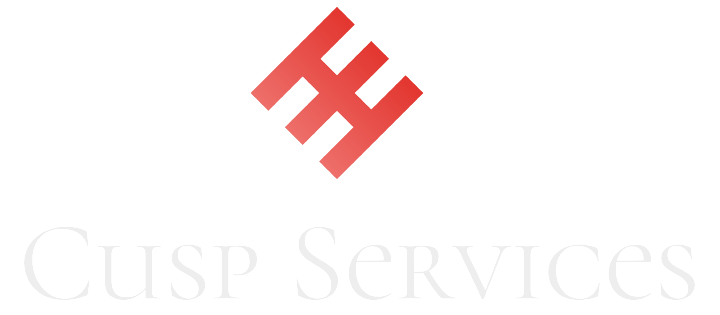
Ascension is the ultimate goal of any organization, as success for any business means maintaining growth once it is achieved. It further shows your startup’s operational effectiveness, resource efficiency, leadership excellence, and financial impact. All stakeholders will want to know if the organization they are investing their time and money into has the probability of growing quickly and enduringly.
With the successful implementation of “delight”, you are bound to achieve-
- higher customer advocacy, referrals, trust, and loyalty
- reduced churn
- more customer referrals
- increased revenue and sales
- stronger customer relationships
But to effectively assess, manage, and sustain this growth, you need to outstrip delight and focus on scaling your business. To do this, you need the help of the best sales growth consulting in India. In this final article of our series on the SPANDA Framework, we talk about how Cusp can help you ascend and scale your startup through effective gap analysis and risk mitigation.
Gap Analysis
Gap analysis refers to assessing your current organizational performance and state and examining the gap between that and your future business goals (target/desired state). The process consists of answering three vital questions:
- Where are you now?
- Where would you like your company to be?
- How do you get there?
Done right, with proper consultation from the best sales growth consulting for SMBs in India, gap analysis can not only help you identify the areas in your company that need improvement but also improve your business efficiency, brand offerings, and profitability.
Conducting Gap Analysis
There are four critical steps for effective gap analysis:
- Check the current state of your company
List the workflows, processes, and other aspects of your organization that need improvement relevant to your target objectives. These can either be associated with the whole business or focused on a specific aspect of your company. Collect relevant data to analyze your current processes and performance.
This can be done by referring to documentation, measuring KPIs and other success metrics, observing project activities, conducting stakeholder interviews, etc.
- See where you want to be in the future
Look at your strategic business goals, improvement objectives, and mission statement. Outline the target condition you want to achieve. It can be expressed in quantifiable terms, like achieving more fielded customer calls or increasing revenue by a certain percentage within a specific period.
You can also express your future state in generalized terms, like gaining more employee engagement, improving company culture, establishing diversity in the workplace, etc.
- Identify the existing gaps
See how far you are from your business target and be specific about it. If your revenue is less than what you planned, what is causing it? Is there an issue with the prices, customer management, sales teams, company workflow, or the product/service itself? Dig deeper and ask relevant questions to clarify the root cause of this gap.
- Formulate the methods to close those gaps
Outline all the possible solutions to be implemented and derive from them clear, specific, and time-bound objectives. It could be hiring additional employees to better handle a particular process, launching diversity programs, focusing on a relevant and scalable product for new target clients rather than customizing existing ones, automating/outsourcing certain processes to save time and resources, etc.
Besides this, you can leverage various tools that provide a strategic framework for a complete gap analysis, such as Porter’s five forces, SWOT analysis, OKRs, McKinsey 7S framework, Nadler-Tushman model, etc. Reach out to us for a deep and effective gap analysis and risk mitigation.
Risk Mitigation
In a recent survey, over 59% of organizations said that the complexity and number of business risks are only increasing. Moreover, 68% of businesses encountered an operational surprise due to a risk they could not anticipate properly. And very few organizations have a robust and mature approach to risk management.
Being a business leader, you must-
- understand the different types of potential risks your organization can encounter
- assess their likelihood
- reduce/prevent them as much as possible by developing a comprehensive plan
- monitor its progress/efficacy
This whole process is referred to as risk mitigation, and it is vital for increasing profitability and sustaining your growth as well as the long-term survival of your company. The risks can be of various types, such as
- Strategic (faults in business strategy)
- Compliance (possibly violating standards, and/or regulations)
- Legal (breaking a government rule)
- Operational (draining profits through internal and external factors)
- Reputational (negative public opinion about the brand, less confidence among stakeholders)
How to Mitigate the Risks?
There are four prominent ways to mitigate business risks.
- Avoidance
Avoid possible risks through the right strategies. It could be hiring additional talent just in case one got sick while working on an important project, a manufacturing business not using hazardous chemicals to prevent damage, a company reducing storing certain customer data to prevent cyberattack consequences, etc.
- Acceptance
Accepting risk as it is if your reward outweighs the risk’s impact in the long run. It could be either when its likelihood is very small, or it has a minor impact.
- Transference
Transfer the risk consequence to a third party, like suppliers, outsourcing partners, contractors, or paying an insurance company to cover the risk.
- Reduction
Reduce the likelihood of risk or its impact by taking the necessary preventive steps beforehand. If you can’t complete an important project due to a lack of funds when on a tight budget, prevent this risk by opting for cheaper alternatives to raw materials, reducing project scope, etc.
Besides gap analysis and risk mitigation, various other vital factors contribute to your business’s ascension. Some of the most impactful ones include business cadence and force multipliers that when implemented properly, can effectively distinguish you from your competitors and raise your business to new heights.
Force Multipliers
Every startup needs force multipliers to scale as well as survive the rising competition. Here are some of the most important force multipliers for you to leverage that can contribute to your organizational growth and scalability:
- Social media presence: social networks facilitate efficient, customized, and person-to-person interaction along with rapid sharing of information at scale, making them a major force multiplier. You can find, connect, and communicate with your customers individually and easily amplify your marketing messages.
- Interaction with online users and customer feedback: responding to user-generated reviews can rapidly multiply your impact and drive your customers’ future decisions. It shows them that you care and that you are a part of the community.
- Nurtured customers: as mentioned in the fourth article of our series, nurtured customers act as dedicated brand advocates. Their strong belief in your cause and product offerings pushes them to do all your force-multiplying work for free!
- Sponsored customer events: they present you with opportunities of bonding with your customers and measure their requirements and satisfaction. Giving them special deals and attention (free tickets to a big event, vouchers, pre-launch product testing, giveaways, etc.) Will exponentially multiply your efforts by increasing their word-of-mouth.
- Industry conferences: they will expose you to major distributors, new markets, and potential clients. Such connections can increase your brand recognition and multiply your existing sales and marketing efforts.
- Partnerships with complementary businesses: the right mergers and acquisitions can multiply your resources (related products and better distribution networks) and enhance your brand image.
- Data and analytics: leveraging big data and analytics helps you effectively predict your company’s future and anticipate near-term changes by evaluating industry trends and directions.
Business Cadence
Business cadence is like a rhythmic sequence of routines and organizational processes and systems that happen with varying frequencies within the business. It can include weekly/monthly meetings, staff reviews, performance analyses, quarterly releases, etc.
This is because regular communication between the leaders/managers and the staff is vital for managing the team members and resources, as well as overall business growth. When implemented correctly in your daily work routine, business cadence can-
- drive team collaboration
- identify and break down barriers and silos
- promote problem-solving and organizational change
- keep the employees engaged and foster productive interactions
- enhance talent retention, employee onboarding, and knowledge sharing
This, in turn, increases business efficiency and in turn, enables project success and overall business growth.
Just start bringing your team together at a dedicated time and venue for discussing vital topics, sharing information, and productive interaction. This is enough to establish a basic cadence within your organization.
Once they get familiar with this rhythmic culture of regular meetings, implement it with your project personnel, functional groups, sub-contractors, and most importantly, your customers.
Some daily cadences can include:
- automated time tracking to assess the profitability of your projects, quote future work, and improve accuracy
- daily tasks to be emailed to your teams’ individual inboxes with tools like ‘Daily Digest’
- daily morning huddles or stand-up meetings with the leadership teams to check the actions planned and assess the progression across the project
Weekly WIP meetings, department updates, pipeline reviews, and resource tracking and forecasting can be good weekly cadences to judge your organization’s resourcing efficiency and possible shortfalls. Lastly, monthly cadences like end-of-the-month closing, invoicing, board meetings, and revenue forecasting can help inform monthly conversations and planning.
All these cadences can help unify your stakeholders in the present, engage them for future goals, and shape the future growth and overall success of your organization. But this is not the end!
Because ascension further involves leveraging KPI dashboards, best estimate assessments, performance review systems, optimization plans, investment plans, etc., and analyzing your costs, cash flow, competitive trends, portfolios, and much more.
To discover more about them and effectively expand the scope of your business for a more out-and-out business ascension, get in touch with the best sales growth consulting for SMBs in Bangalore.


